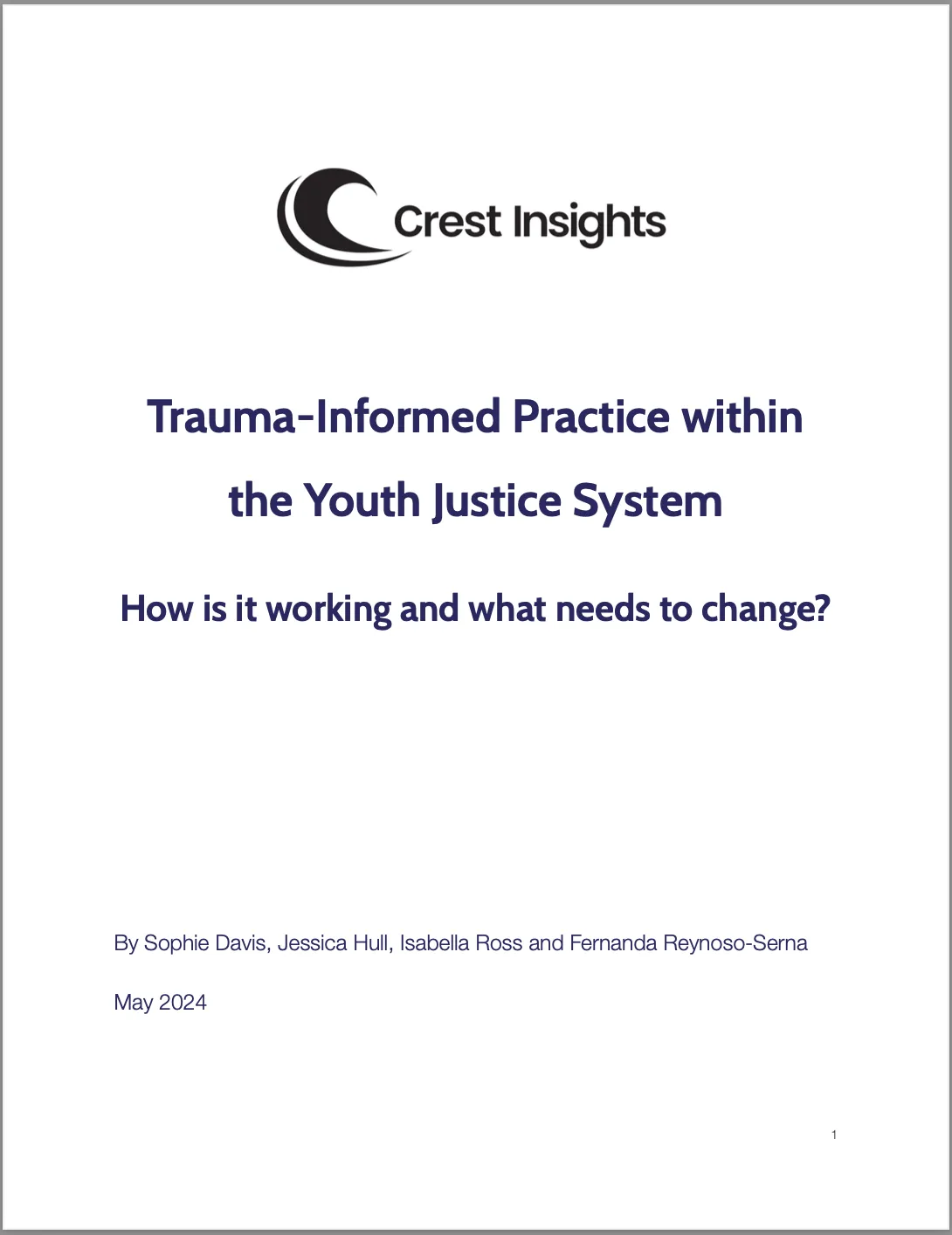
In recent years, youth justice services have increasingly adopted trauma-informed practice (TIP),aimed at increasing awareness of the impacts of trauma, preventing re-traumatisation and ultimately reducing offending. Yet trauma-informed practice lacks evidence, both in terms of its effectiveness and the way in which it is understood and applied. This research, funded by theHadley Trust, sought to address this evidence gap and take a closer look at the way in which TIP is implemented in the youth justice sector from the perspectives of experts, youth justice practitioners, and crucially, children and young people. Notably, recent positive trends around youth first-time entrants and reoffending rates have shown signs of reverse in the past year, and are further complicated by a steadily increasing proportion of first-time entrants committing violence against the person offences.1 Given this context, it is vital that we continue to look for ways to effectively work with young people who have been involved in, or are at risk of involvement in, serious violence. Our report seeks to contribute to the understanding of TIP and provides learnings for services looking to develop and improve their offer for this cohort, as well as the wider sector.
The meaning of trauma-informed practice
Despite concerns over the lack of definition, and the multiplicity of terms used to refer to trauma-informed ways of working, leaders, practitioners and experts we spoke to had a clear - and broadly consistent - understanding of what TIP means. They aligned on TIP being a cross-cutting way of working, as opposed to a specific intervention or means of assessing children and young people. They identified similar principles: being aware of the impact of trauma on a child’s behaviour, building trust and safety, involving the child in decision-making and preventing re-traumatisation. Interestingly, many described TIP as ‘instinctual’, building on what they understood to be best practice.
However, practitioners did identify two main areas of concern around the meaning - and levels of understanding - of trauma-informed practice in youth justice. One was around the language of trauma, which some felt could be overwhelming to practitioners working with children and young people. The other related to the overlap with other frameworks (Child First, AMBIT, systemic working), which risked creating confusion and duplication, although interviewees said that the various frameworks shared many of the same principles.